Why aren’t my students using text features? Text Features are right there, easy to read, and we use them all the time! Well…most elementary students don’t need or use text features in real life, yet. They haven’t skimmed a flier for a website or email address, searched for the due date on a bill, or hunted for an oven temperature on a recipe. So, text features don’t carry much meaning.
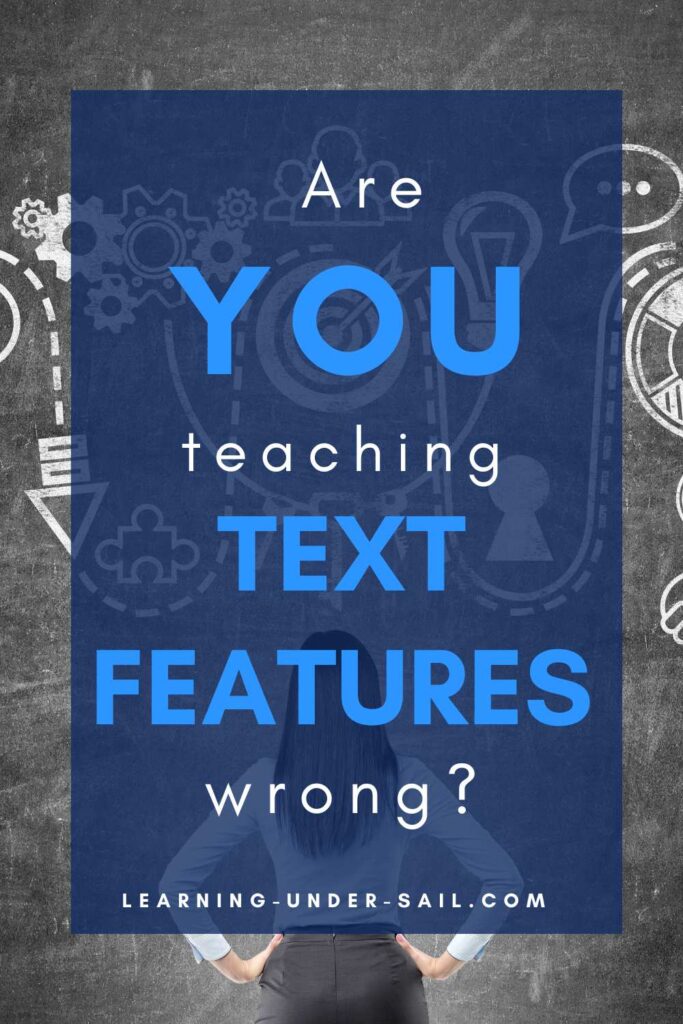
The piece your students are missing is that those text features hold information that the author has decided is important. Text features are keys to finding information quickly in the text and determining what the author has decided is important. In nonfiction, text features are closely related to identifying the main idea and author’s purpose, which are difficult skills for students to master.
If you aren’t teaching why authors include text features, you are missing an opportunity to help students understand the text, the author’s purpose, and the main idea.
Here are five strategies to help your students master text features.
Strategy #1 Integrate Main Idea Lessons With Text Feature Lessons
Authors include text features to bring the reader’s attention to what is important and help the reader understand the text. To make students understand that text features are there to support understanding, explicitly teach students that different paragraphs will align with different text features.
In addition to teaching that the text features are there to support the reader’s understanding of the paragraphs, authors know that readers will not remember everything they read, so they use text features to bring attention to what is important enough to remember. Readers are meant to pay attention to headings and bold words because these text features bring attention to what is important in the text. Check out this blog post for tips on teaching main idea and supporting details.
Strategy #2 Teach Text Feature Vocabulary
It’s impossible to answer a question about a specific text feature if you can’t identify that text feature. Text feature vocabulary words are often new words that students haven’t read or used much. Because these words are new to students, they need many opportunities to practice using and reading text feature vocabulary words. You can put up text feature vocabulary word posters in your classroom, give students text feature vocabulary notes they can refer back to if they have a question, and give students a chance to identify the text features in a workstation or center during independent work time.
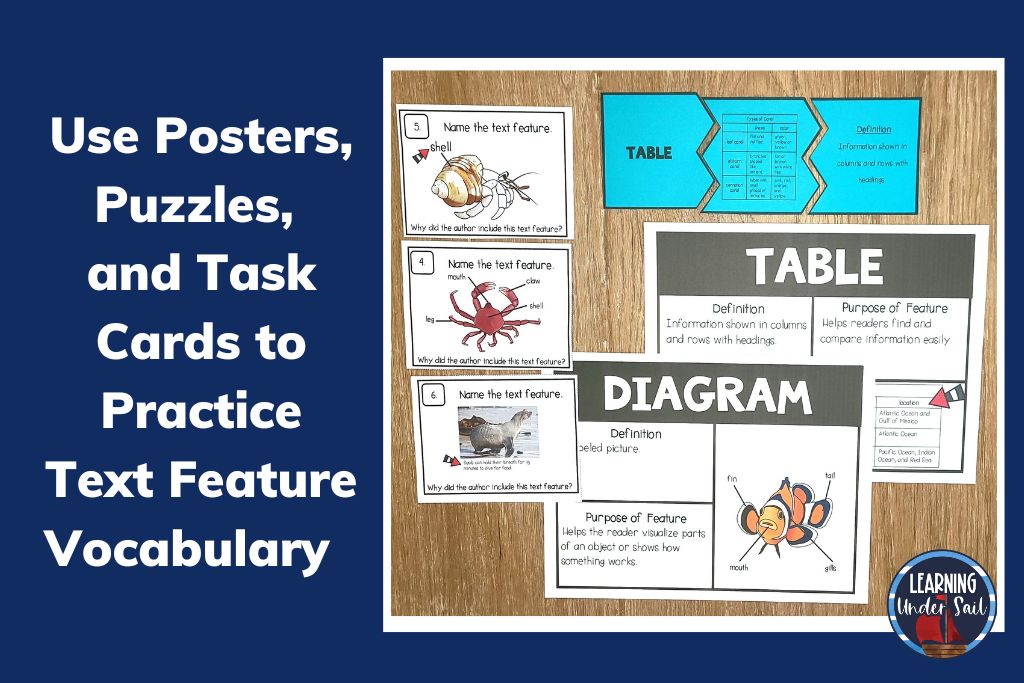
Another way to teach text feature vocabulary is to point out photographs, headings, bold words, and other text features when reading science and social studies texts. If students have already been introduced to the vocabulary, you can play a quick game of, “Where’s the text feature?” Give each student a Post-it note and call out the text feature that you want them to identify. This is a quick way to see if students know the vocabulary and show them where to find the text features as they are reading to learn.
Strategy #3 Teach the “Why” or Author’s Reason for Including Text Features
Text features are there for a reason. Teach your students why the author included them. Authors include text features to make the text easier to read and understand. Teach that text features are like a secret code the author uses to help the reader remember and see what is important in the text. Authors want readers to learn, so they include nonfiction text features as built-in “tools” for readers to use as they are reading.

One way that you can help your students understand why authors use text features is to find a text with many text features, and then type up the same text without any text features on a plain white sheet of paper. Ask your students which one they would rather read, the text with features or the plain paragraphs on the white paper. They both have the same information, so why would we rather read the text with the text features?
Strategy #4 Create Your Own Book, Flier, or Poster
If you can create text features, you have a deep understanding of their meaning and purpose. Have groups or individual students create a short book about a current science topic. Students could also create a flier or poster to advertise an upcoming school or classroom event. Manage this activity so it best supports your students. You will likely have to model making a text feature and then guide students to create a text feature before turning them loose to create their own text features independently.
Strategy #5 Give Opportunities for Practice
The more experience students have with text features the better they will understand what they are and how to use them. Begin by providing students with text feature posters or notes to refer to as they are working. In the activity, students should have the opportunity to identify and use the text feature. You can set up an activity that focuses on text features like my Text Features Puzzles and Task Cards or Nonfiction Text Feature Mixed Review.
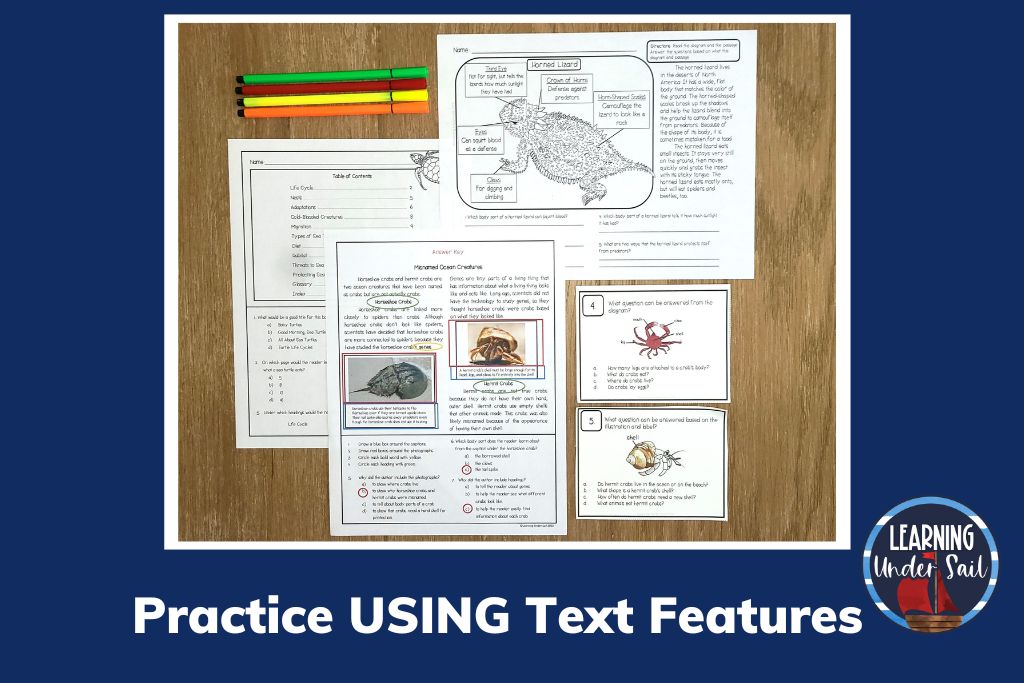
Another option is to provide students with a nonfiction text from their science book or school library and have them identify specific text features and their purpose.
Text Feature Bonus:
Here’s an outline of a text feature lesson plan you can use for a small group or intervention group.
Day 1- Use posters and puzzle cards to introduce the text features.
- Hang the posters up so students can see them in the classroom.
- Spread out the example part of the puzzle cards in front of the small group. Put the names of the text features in a pile. The teacher holds the meaning part of the puzzles.
- Draw one card text feature name at a time and have the group match it with the picture. Use the wall posters for support. After students in the group have matched the example to the name of the text feature, the teacher adds the meaning part of the puzzle and explains the meaning of each text feature.
- After all the cards are matched, the teacher shows a few examples of text features in a text. Then, allow students to hunt for text features in a science textbook, nonfiction book, or functional text.
- Have students share the text features they find and how the feature makes the text easier to understand.
Day 2 and 3 – Read passages with text features.
- Choose 3-4 text features to focus on for the lesson and separate those puzzle cards.
- Introduce the lesson by laying out the examples of the text features you have chosen. Have the group match the meaning and purpose of each text feature.
- The group reads the passage with text features and discusses how the text features help the reader understand the text. The group discusses why the author includes each text feature and how the text feature is related to the main idea.
Day 4 and 5 – Create text features to add to an existing text
- Find a nonfiction passage without many text features. One to try is Turtles Love the Beach, Too, from ReadWorks. ReadWorks is a website where educators can find free, leveled passages.
- Use Text Feature Task cards to review text features.
- Preview the text – what text features do we see?
- Read the text to understand what is important in the text.
- What text features could we add? (For example, in the passage, Turtles Love the Beach, Too, we could add two diagrams to compare the green sea turtle and the hawksbill turtle, a world map that shows the location of Hawaii, make a bulleted list or text box that tell how people are trying to save sea turtles, add details to the caption of the photograph, and/or add headings to the passage.
- If the students in the group need more support, they can add the same text feature or different students can make different text features to add to the passage if they are ready to work more independently.
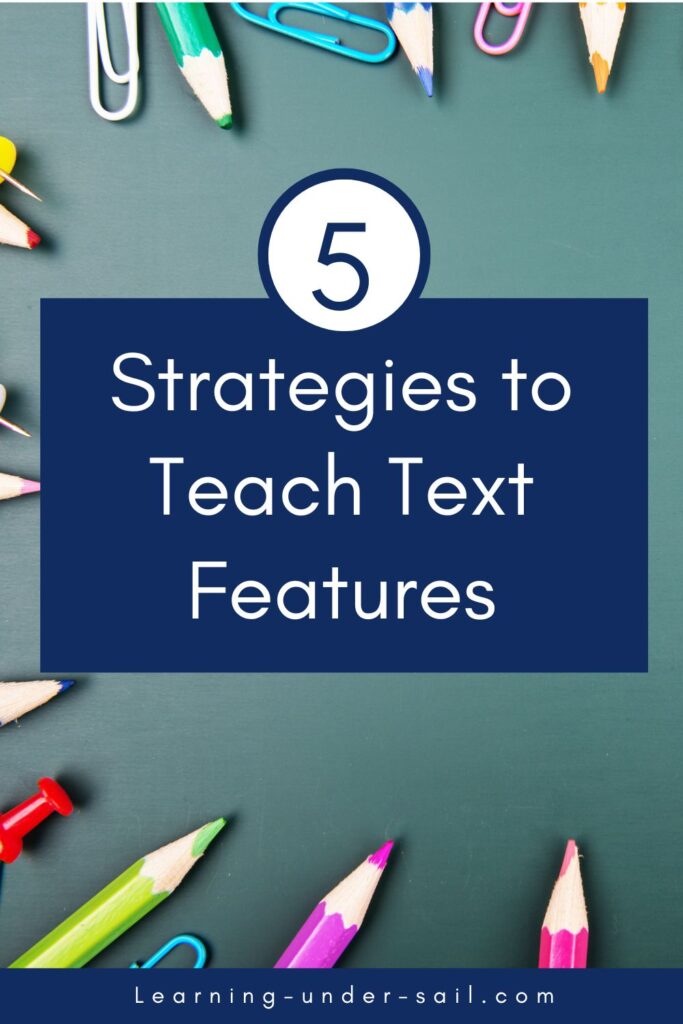
You can find all of my Nonfiction Text Feature resources in my TPT store here.
Are you finding that your students are struggling with identifying the main idea? Read How to Teach Main Idea and Details – 5 Simple Steps
I love teaching with authentic text. Here’s an article that lists Great Books to Teach Nonfiction Features.
What’s your biggest intervention challenge? I’d love to hear from you!
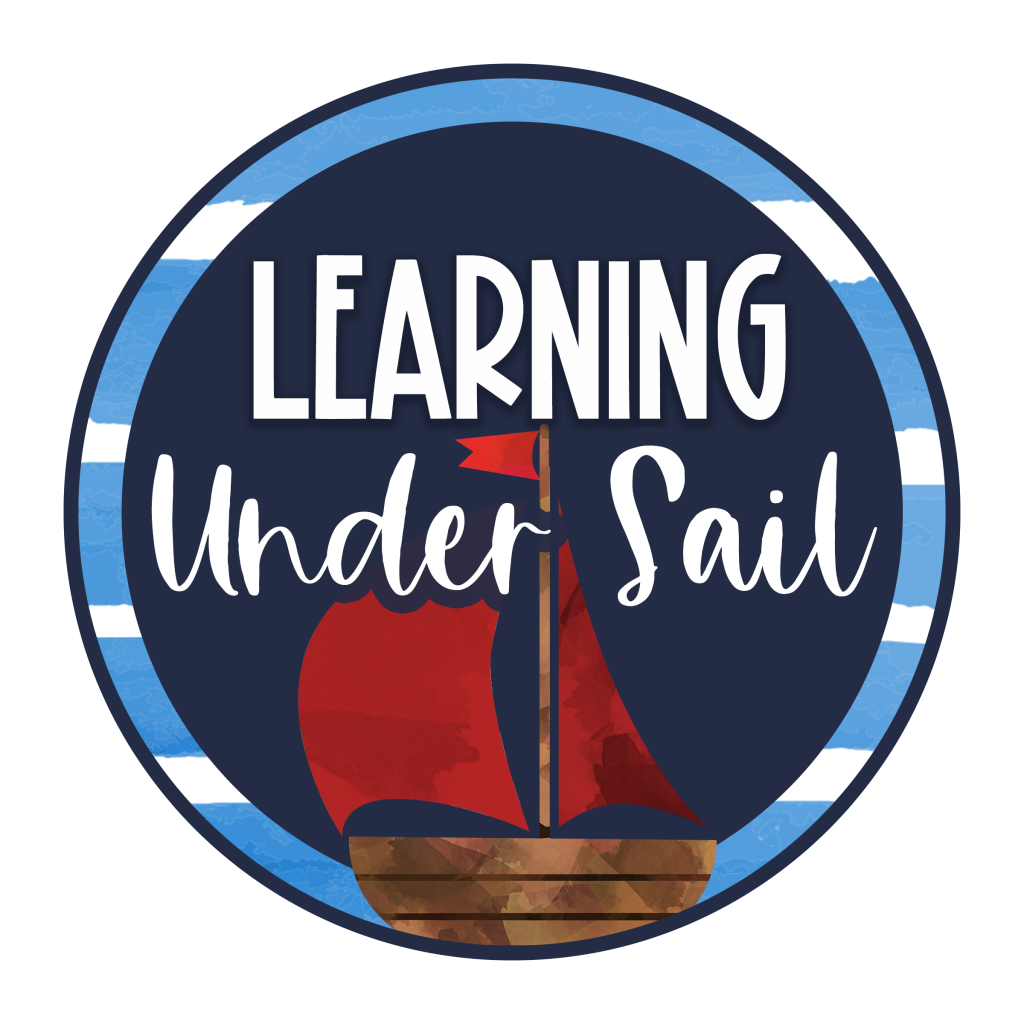

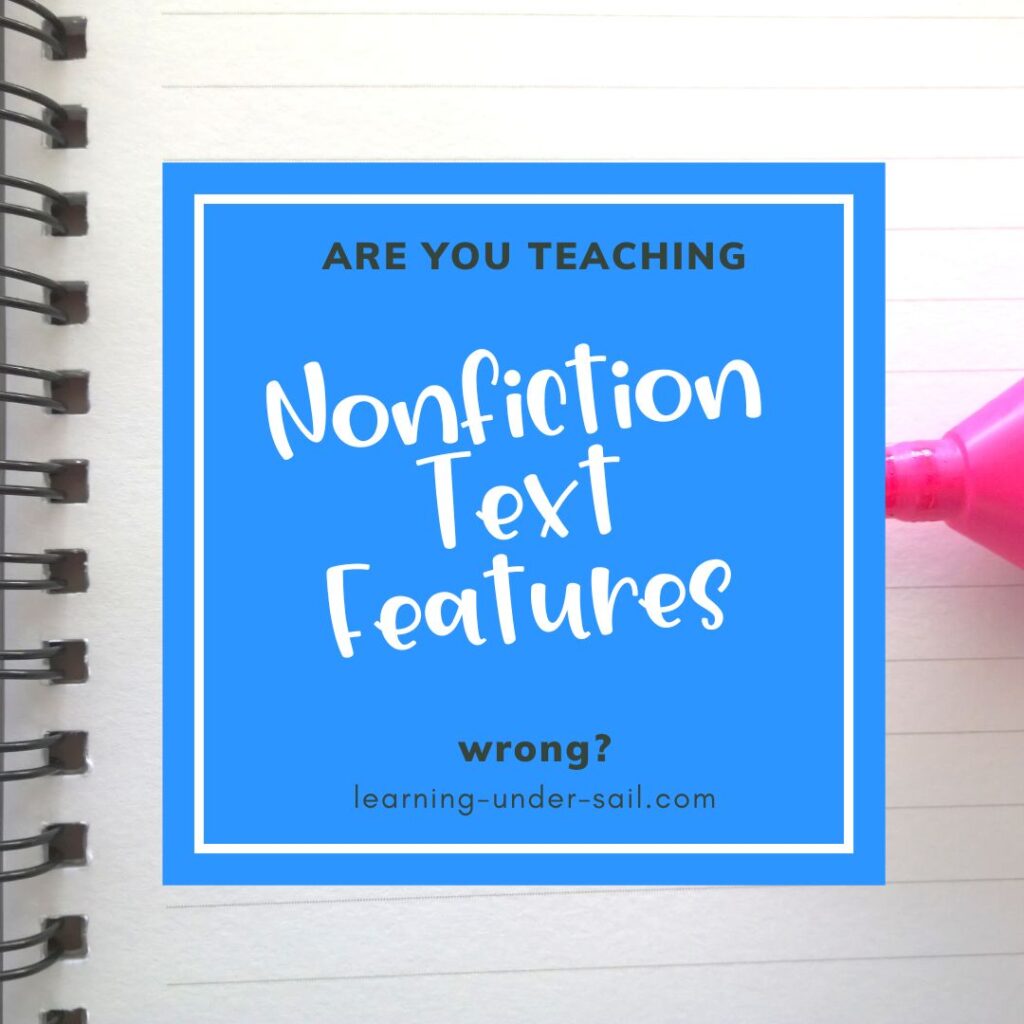

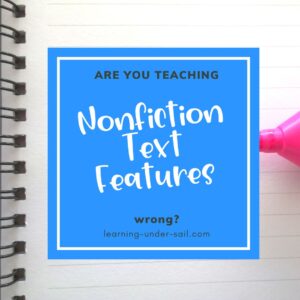
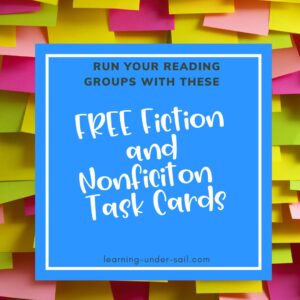
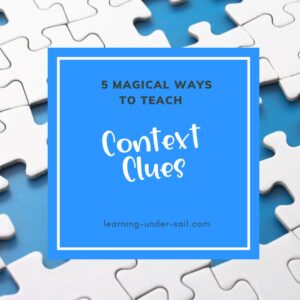
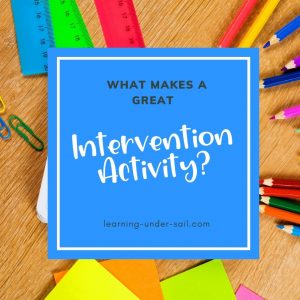


One Response